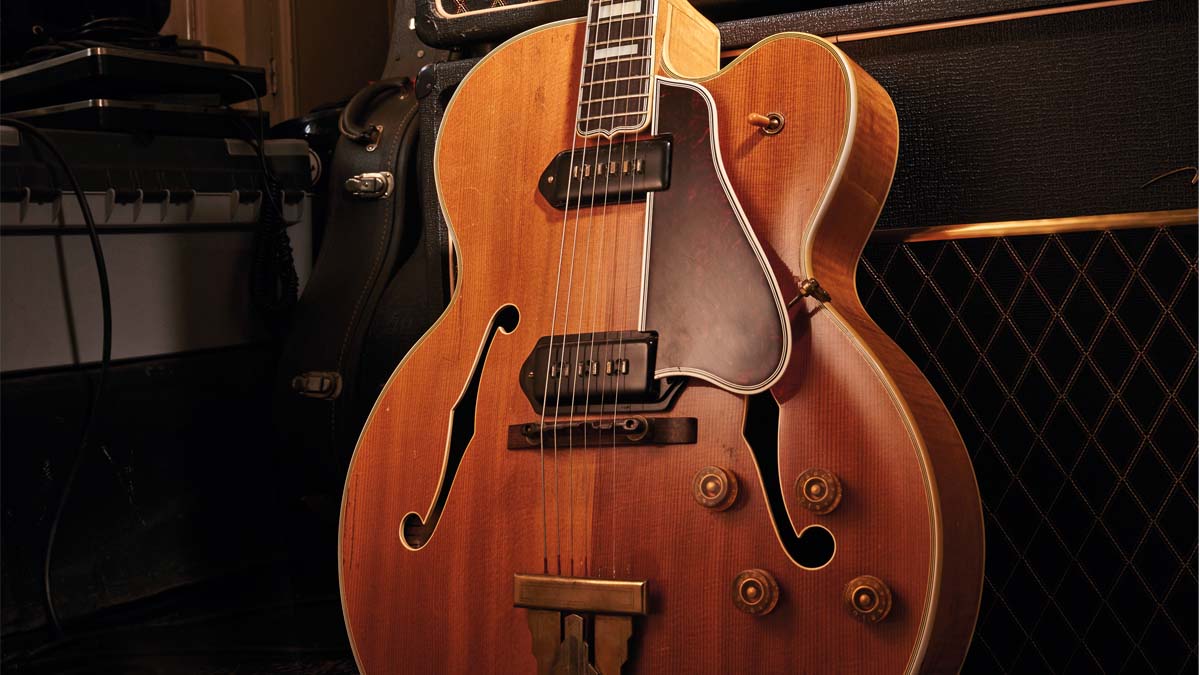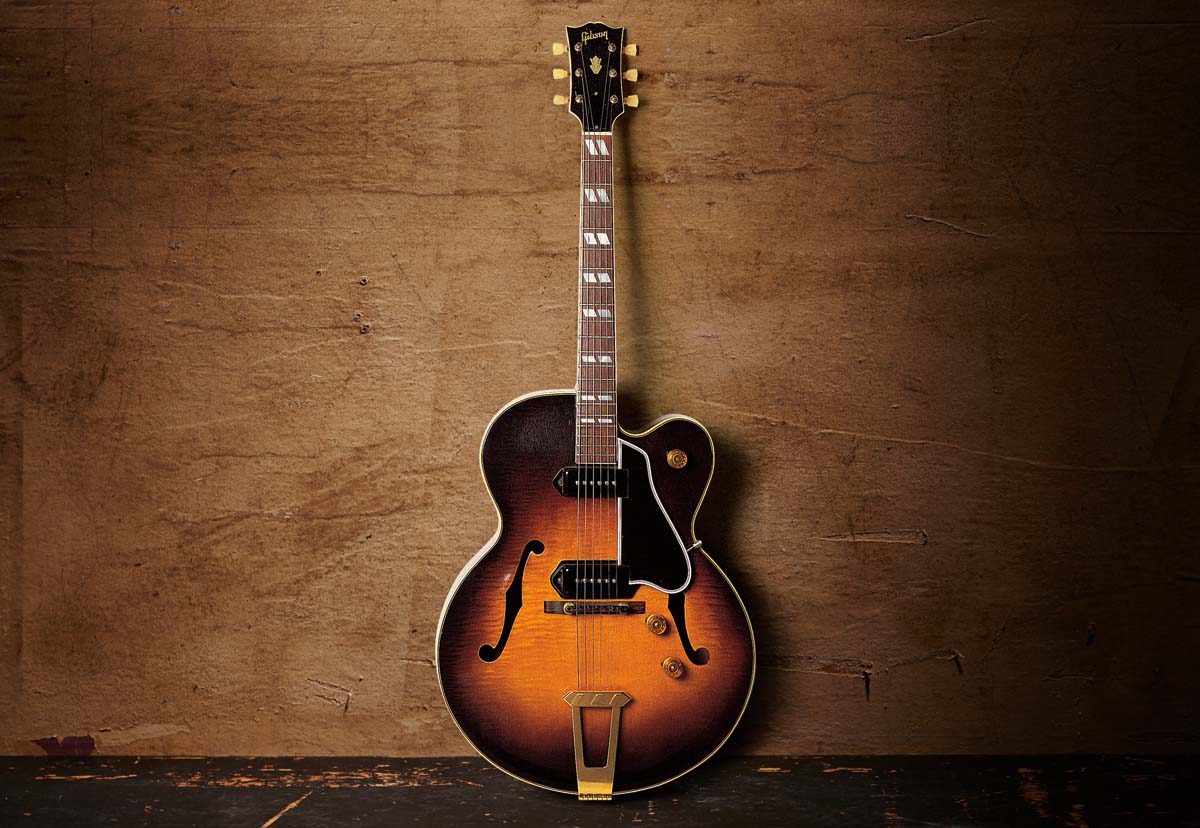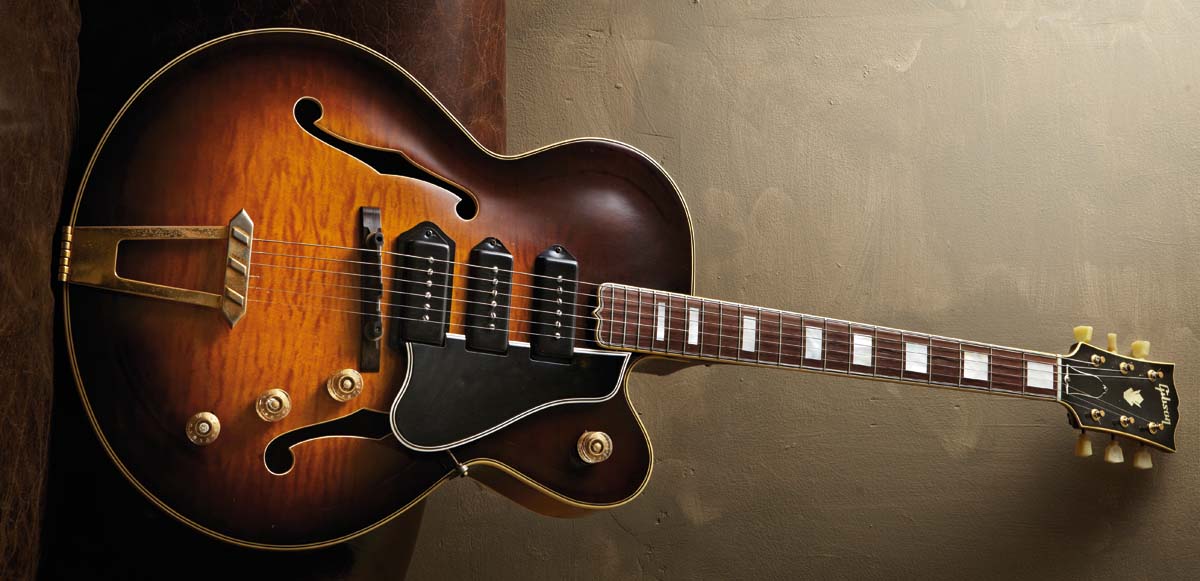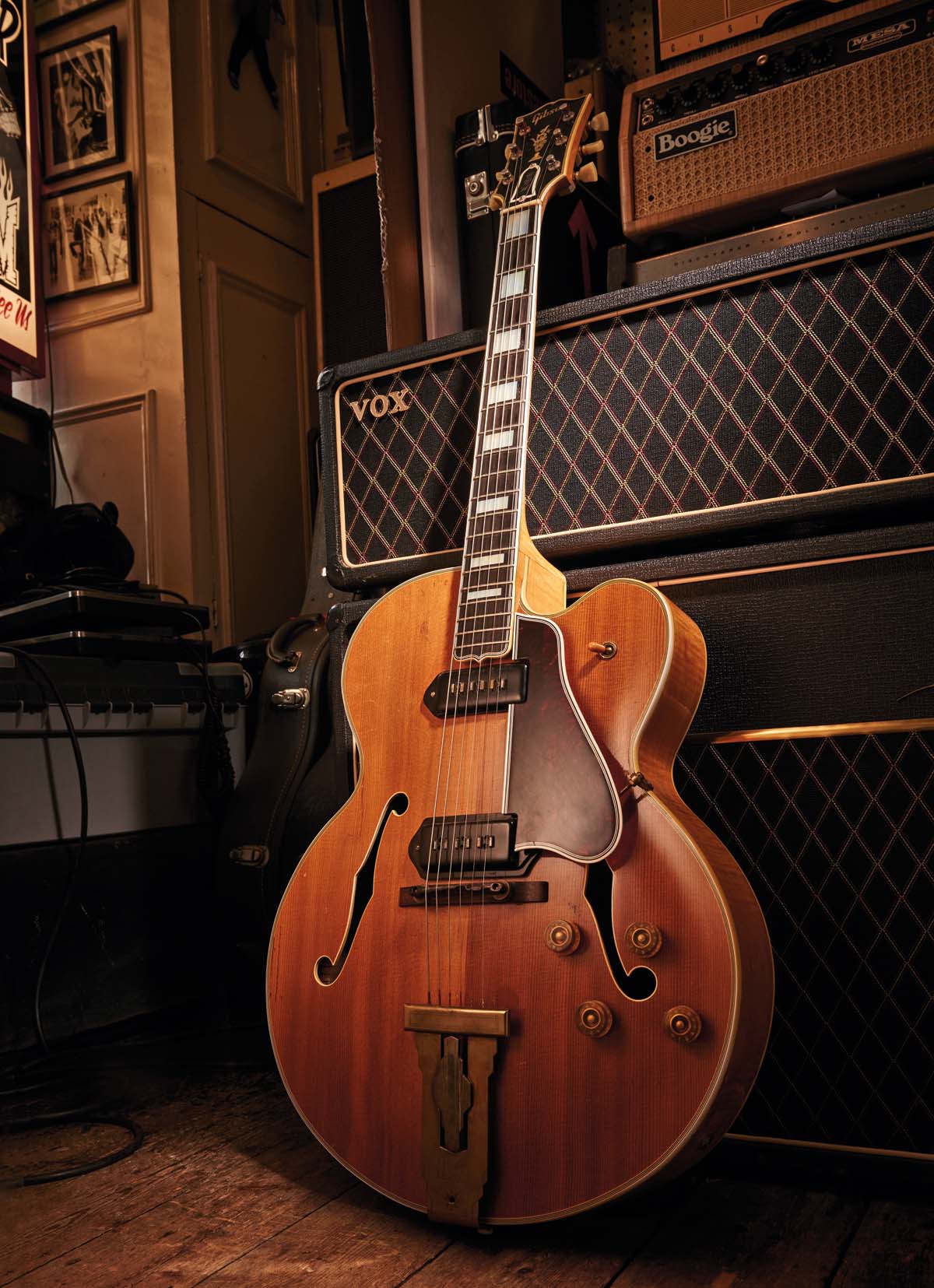The history of Gibson's electric archtops
We shed light on some of the key differences between Gibson’s early flagship models…

The first ‘Electric Spanish’ guitar produced by Gibson was the groundbreaking ES-150 in 1936. The company’s solid/carved-top pre-war ‘ES’ range was gradually extended with the development of the ES-100 in 1937 (renamed the ES-125 by 1941) and the arrival of the short-lived ES-250 in 1939, along with its replacement, the ES-300, in 1940.
Although World War II temporarily put the kibosh on electric guitar-building from 1942, Gibson soon returned to Electric Spanish production after the war with its revamped, laminated body designs, including the ES-125, ES-150 and ES-300 in 1946, followed by the singlecutaway ES-350P (Premier) in 1947.
In 1948 the ES-350P was upgraded with a dual-pickup assembly in tandem with the ES-300, whereupon it became known simply as the ES-350. At this point, it was clear that pickups were the future, and with Ted McCarty’s arrival the same year Gibson’s golden era of electric guitar design truly got underway with the triple P-90-loaded laminated body ES-5 appearing in 1949.
With demand for electric guitars growing, equivalent versions of Gibson’s foremost acoustics, the L-5 and Super 400, then followed. Thus, in 1951 the solid/carved-top L-5CES and Super 400CES (Cutaway Electric Spanish) became the firm’s undisputed flagship archtops.
1. ES-350

Essentially a ‘Premier’ (archaic Gibson speak for cutaway) version of its sibling, the ES-300, the ES-350 was introduced in 1947 as the ES-350P and enjoyed its moment in the sun as Gibson’s primo electric archtop until the arrival of the ES-5 in 1949.
With its gold-plated hardware, multiple pickups and single Venetian cutaway – a first for regular production Gibson electrics – it set a benchmark for future top-of-the-line models. Like the ES-300, the ES-350 measures 17 inches across, has a full body depth of 3 3/8 inches and sports a 25½-inch scale length neck with a rosewood ’board inlaid with double-parallelogram markers.
Its body is constructed using laminated maple and features unbound f-holes along with triple-binding on the top and back. A favourite of jazz stars Tal Farlow and Barney Kessel, it was phased out at the dawn of rock ’n’ roll in 1956, having been superseded by the Chuck Berry-endorsed ES-350T (Thinline).
Get The Pick Newsletter
All the latest guitar news, interviews, lessons, reviews, deals and more, direct to your inbox!
2. ES-5

When Gibson released the ES-5 in 1949 it was hailed as “the supreme electronic version of the famed Gibson L-5” – the Lloyd Loar-designed progenitor of all jazzboxes released earlier in 1923.
But while the ES-5 borrowed its multiple-bound pointed fingerboard design and large pearl block inlays from the L-5, its body was more akin to the laminated-maple construction of the ES-350, with the same dimensions, single Venetian cutaway, triple-bound top and back, and unbound f-holes.
The ES-5 was originally loaded with three P-90 single coils that feature separate volume controls along with a master tone control, making it “the instrument of a thousand voices”, according to Gibson.
In 1955 it was dubbed the ES-5 Switchmaster while a four-way pickup selector switch was added and three separate tone controls replaced the single master tone knob. In 1957, the ES-5 was augmented with PAF humbuckers before eventually being discontinued by 1962.
3. L-5CES

Although Gibson initially claimed that the ES-5 was to be “the supreme electronic version” of the L-5, it was soon decided that a more faithful design was required in order to appeal to the upper echelons of the rapidly expanding electric guitar market.
Subsequently, in 1951 the L-5CES was introduced, surpassing the ES-5 on all fronts as the L-5’s electric sibling. More accurately, the L-5CES was derived from the single-cutaway L-5C (previously known as the L-5P or L-5 Premier).
The L-5CES may share the same body dimensions as the ES-5, but with its carved spruce top and solid maple back and sides its construction is fundamentally different. Furthermore, its fancy appointments and stylish ebony fretboard go on to place it in a different class to the plainer, rosewood-endowed ES-5 altogether.
The dual-pickup L-5CES was originally fitted with P-90s prior to the arrival of Alnico pickups in 1953. In 1958 these were supplanted by PAF humbuckers.
4. Super 400CES

With a design that originated from the 1934 Super 400 acoustic archtop, the Super 400CES was introduced in tandem with the L-5CES in 1951 and represented the pinnacle of Gibson’s ingenuity and craftsmanship.
Measuring 18 inches across and decked out with large fancy inlays, multiple-ply binding and gold-plated hardware from top to bottom, this model was the largest and dearest of Gibson’s archtop family. Like all the aforementioned guitars, it was available in either Sunburst or Natural finishes as standard (the latter designated with an ‘N’ suffix).
With its carved spruce top and solid maple back and sides, the Super 400CES was similar in construction to the L-5CES and these two leading electrics followed the same trajectory with respect to pickup changes – moving from P-90s to Alnico units in late 1953, followed by PAFs in 1958 as standard. In 1960 the cutaway was changed to a Florentine design, before reverting to the original Venetian style in 1969.
Rod Brakes is a music journalist with an expertise in guitars. Having spent many years at the coalface as a guitar dealer and tech, Rod's more recent work as a writer covering artists, industry pros and gear includes contributions for leading publications and websites such as Guitarist, Total Guitar, Guitar World, Guitar Player and MusicRadar in addition to specialist music books, blogs and social media. He is also a lifelong musician.
“It holds its own purely as a playable guitar. It’s really cool for the traveling musician – you can bring it on a flight and it fits beneath the seat”: Why Steve Stevens put his name to a foldable guitar
“Finely tuned instruments with effortless playability and one of the best vibratos there is”: PRS Standard 24 Satin and S2 Standard 24 Satin review











